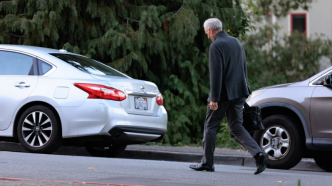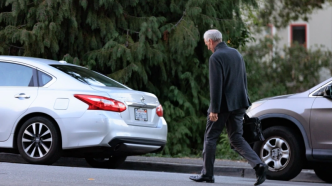
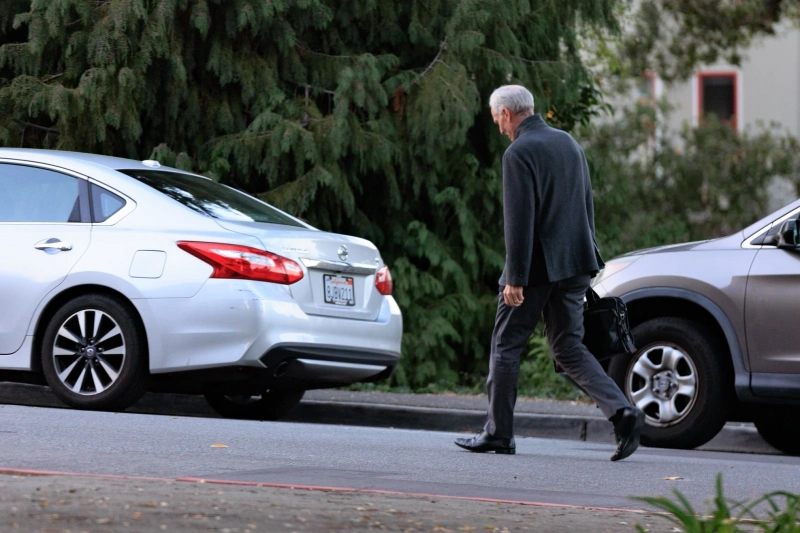
Marc Tessier Lavigne has served as president of Stanford University for nearly seven years.
Within 4 months, Marc Tessier Lavigne, the 11th president of Stanford University, withdrew the fourth paper.
This is the first paper he has withdrawn after retracting one paper from the journal Cell and two papers from the journal Science. The paper was published online in the international academic journal Nature on February 19, 2009.
On December 18, 2023, the journal "Nature" published the relevant retraction statement online.
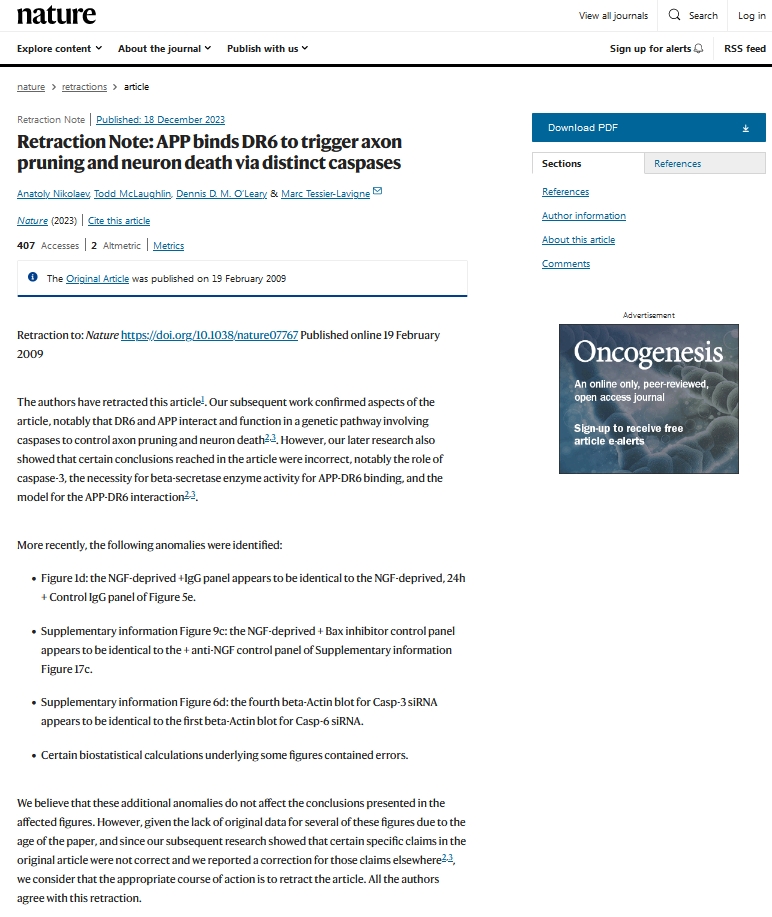
On December 18, 2023, the journal Nature issued a retraction statement online stating that authors such as Marc Tessier Lavigne withdrew a paper. Some images were reused, and related biometric calculations were found to contain errors.
In addition, regarding the fifth paper - the day Marc Tessier Lavigne announced his resignation, July 19, 2023, local time, the fifth paper mentioned in his laboratory website announcement was also mentioned in the aforementioned "Nature" "On the day the journal article was withdrawn, the editorial department of the journal Nature published the relevant "editorial expression" online.
Because the school newspaper, The Stanford Daily, took the lead in attacking, accusing Marc Tessier Lavigne of academic misconduct such as tampering with paper data and pictures. After eight months of review, on July 19, 2023 On the same day that the review report was released, Mark Tessier-Lavigne announced his resignation. However, he will continue to serve as a tenured professor in the school's biology department.
He is a "star" expert in Alzheimer's disease research. According to the official website of Stanford University, Mark Tessier-Lavigne is a world leader in the field of brain development and repair research. His research focuses on the causes and treatments of degenerative brain diseases such as Alzheimer's and Parkinson's diseases, as well as the treatment of spinal cord injuries.
On December 18, the retraction statement published online by the journal Nature stated that the authors were withdrawing the paper in question. Follow-up research confirmed some of the views in the paper, and also showed that some of the conclusions in the paper involved were incorrect, especially regarding the role of caspase-3 (caspase-3) and the requirement for beta for APP-DR6 binding. Model of secretase activity and APP-DR6 interaction.
The statement stated that some other anomalies have been discovered recently. For example, some images were found to be reused in Figures 1d and 5e, Supplementary Information Figure 9c and Supplementary Information Figure 7c, and Supplementary Information Figure 6d; in addition, some images in the papers involved were found to be repeated. There is an error in the biometric calculation.
The title of the paper involved is "APP binds DR6 to trigger axon pruning and neuron death via distinct caspases." Marc Tessier Lavigne is the corresponding author of the paper.
On December 18, the journal Nature also issued an "editorial concern" regarding another paper by Marc Tessier Lavigne. "Readers are reminded that image integrity issues were raised with some of the data in this paper. A report to the Stanford Board of Trustees concluded that this article reflects evidence that research data has been manipulated. We considered these issues," the statement said. , found that the images in the leftmost channels of the top and bottom panels of Supplementary Figure 2E appear to be duplicates. Given the age of the paper, there is insufficient information to conclusively assess how the relevant image duplication occurs. However, contemporaneous replication provided by the authors The data confirm the validity of the data in Supplementary Figure 2E."
The title of the paper involved is "The netrin receptor UNC5B mediates guidance events controlling morphogenesis of the vascular system" (The netrin receptor UNC5B mediates guidance events controlling morphogenesis of the vascular system), which was published online on October 27, 2004. Marc Tessier Lavigne is one of the two corresponding authors of the paper.
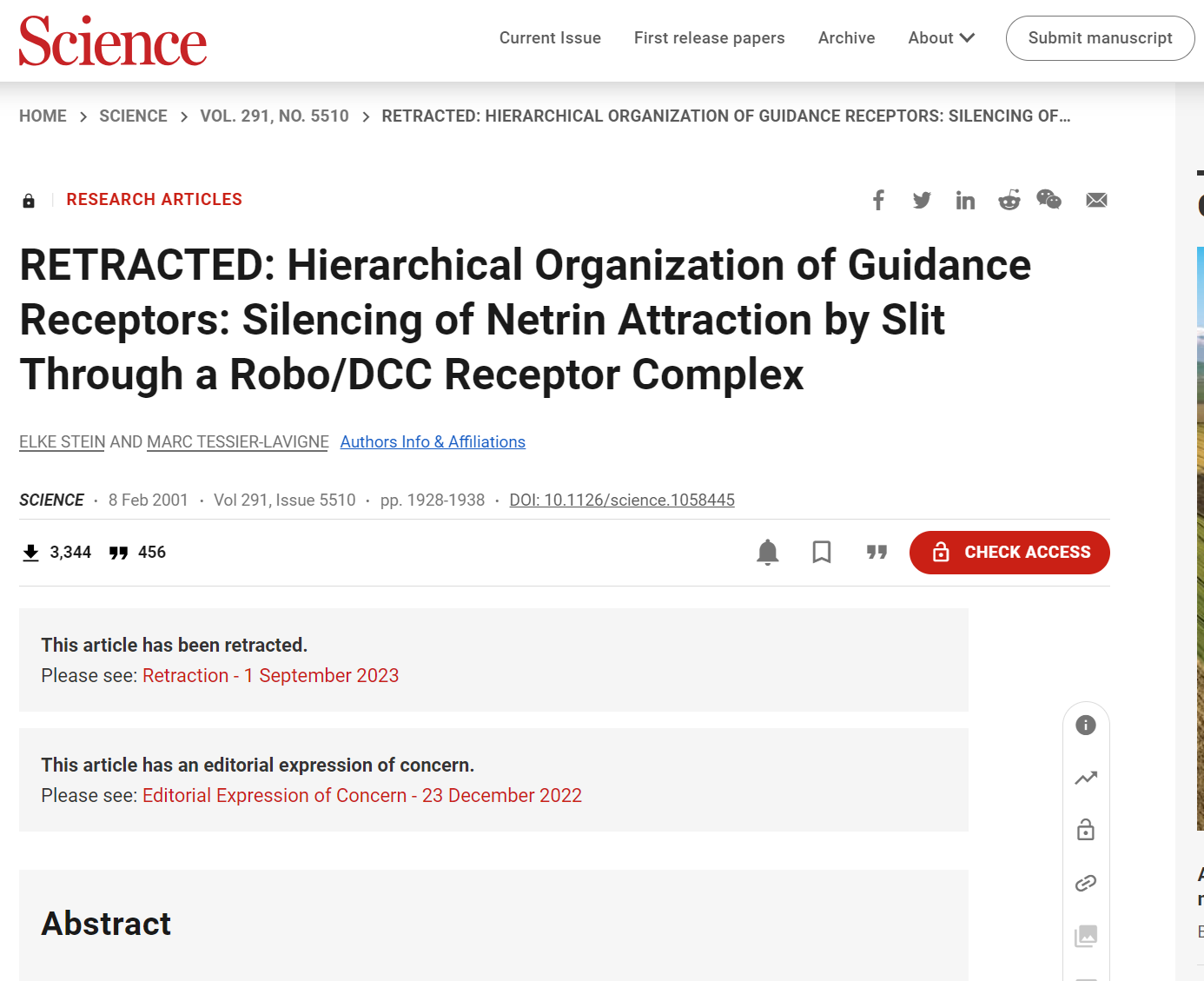
Marc Tessier Lavigne, the 11th president of Stanford University, withdrew his Science journal article due to questions about image manipulation and image duplication.
Three months ago, on August 31, local time, the day Marc Tessier Lavigne’s resignation officially came into effect, the international academic journal Science published two almost identical retraction statements online: due to the questioned images Due to issues such as manipulation and image duplication, two research papers of which Lavigne was the corresponding author were voluntarily withdrawn.
The international academic journal Cell also published a similar retraction statement online, retracting a paper published 24 years ago.
Links to relevant statements and papers:
1. Retracted paper: https://www.nature.com/articles/nature07767
2. Withdrawal statement: https://www.nature.com/articles/s41586-023-06943-3
3. Editor’s concerns: https://www.nature.com/articles/s41586-023-06944-2

